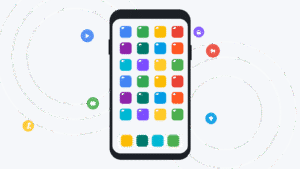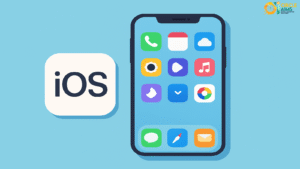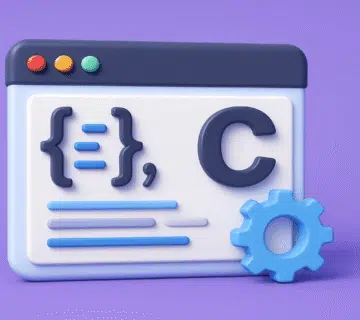iOS applications
The Official Language for iOS App Development: Swift
Introduction to Swift

Swift is a modern programming language developed by Apple to simplify the process of building applications for iOS. It was first announced in June 2014, and since then it has become a cornerstone of the app-development world. Swift was designed to be more powerful and flexible than previous languages like Objective-C, with the goal of improving the programmer’s experience and making code writing easier.
Swift offers many features that make it the best choice for iOS development. For example, it has strong type safety, which reduces coding errors that can occur when handling data. Swift also provides high performance thanks to a modern, well-engineered runtime and libraries, meaning apps built with it can run smoothly and efficiently across devices.
One of Swift’s most important advantages is how easy it is to learn and use. The language was designed to be understandable even for beginners, helping them enter the world of app development. Swift includes a wide range of tools and features that help developers achieve their goals, such as expressions, functions, and real-time updates.
Continuous learning around Swift is also essential to developing a programmer’s skills, ensuring that apps can keep pace with future technological advances.
Core Features of Swift
Swift is one of the most popular programming languages for iOS app development thanks to a set of core features that accelerate development and ensure app quality. Among these features are readability and ease of writing, making Swift an ideal choice for both beginners and seasoned developers.
Swift’s clear syntax enables developers to write clean, easy-to-trace code. This simplifies code maintenance and updates, since developers can quickly understand the code—positively impacting productivity. In addition, the language offers advanced data structures that improve programming efficiency.
Another standout feature of Swift is safety. It was designed to resist common errors that can lead to security issues. For example, Swift provides safe memory handling, which reduces the risk of memory leaks and crashes. These advantages make Swift-based apps less error-prone and more reliable.
Swift is also fast. Thanks to ongoing performance improvements, the language executes code quickly, allowing developers to build responsive apps. In a world that demands efficient, high-performance applications, this is a crucial competitive advantage.
Overall, Swift’s features make it a primary choice for iOS development, helping developers create more efficient, less error-prone apps. With ease of use, safety, and speed, Swift significantly enhances the development experience.
Developing iOS Apps with Swift
Swift is a powerful, modern language for building iOS applications, making it an excellent choice for both new and experienced developers. The first step in developing with Swift is installing the integrated development environment Xcode, which provides all the tools you need, including a code editor, simulators, and debugging tools. Xcode is available for free on the Mac App Store, making it easy for beginners to get started.
After installing Xcode, developers can start by creating a new project. This involves choosing an app type, which determines the basic structure and required components. Developers will select from App Templates that provide an initial design and necessary UI elements, saving design time and effort.
At this stage, developers should also be familiar with fundamental concepts such as the app’s architecture and interface elements like buttons, menus, and text fields.
When writing Swift code, it’s recommended to learn the language’s features—clear syntax, multiple programming paradigms, and modern tools. Beginners should build small starter projects, such as a calculator or a notes app. These simple projects help reinforce understanding of how Swift works within the iOS environment. With practice, Swift can be used to build more complex apps that include features like multi-user support, network interactions, and event handling.
In conclusion, developing iOS apps with Swift is an engaging, step-by-step process that requires dedication and ongoing practice to reach proficiency. Xcode provides everything a beginner needs for an enjoyable, productive development experience.
Libraries and Frameworks Used with Swift
Libraries and frameworks are essential elements that enhance the experience of developing iOS apps with Swift. A key framework is UIKit, widely used to build user interfaces. UIKit provides a broad range of UI components—such as buttons, menus, and view controllers—making it easier to create attractive, interactive interfaces. Developers can use UIKit to build traditional apps or apps that offer a smooth user experience across Apple devices.
There is also SwiftUI, a modern framework introduced in recent iOS releases. SwiftUI represents a new, simpler, and more efficient approach to building user interfaces. It allows developers to create interactive UIs with less code, making development smoother. SwiftUI supports direct interaction and instant UI updates, enhancing user engagement.
Both UIKit and SwiftUI are effective tools that help developers streamline workflows and boost productivity. Developers can choose the framework that best fits their project requirements: UIKit can be used to create more traditional, widely compatible apps, while SwiftUI can be used in modern apps that require polished, fluid interfaces. These libraries and frameworks are therefore essential for any developer seeking to get the most out of Swift when building iOS apps.
Challenges of Developing Apps with Swift
Swift is one of the most popular languages for iOS development, but using it is not without challenges. A primary challenge developers may face is compatibility with earlier iOS versions. With each new OS update, Apple enhances Swift and introduces new features. These improvements can lead to incompatibilities with older apps, requiring developers to make ongoing adjustments to maintain performance and stability.
There are also performance-related issues that can hinder development. Although Swift is designed to be fast and efficient, some apps may experience poor performance due to inefficient resource loading or code structure. It’s important for developers to analyze app performance carefully, investigate potential bugs, and review any security concerns.
To overcome these challenges, developers should adopt best practices during development—for example, writing clean, reusable code to make maintenance easier. They can also use third-party libraries that support older iOS versions to broaden app reach and increase the user base.
Regularly reassessing technical requirements and applying optimal testing strategies are essential to the success of Swift apps. With a thoughtful approach and close performance monitoring, developers can efficiently overcome these challenges and achieve excellent results in future projects.

Swift vs. Other Programming Languages
Swift, developed by Apple, is a highly modern language aimed at enhancing iOS app development. When comparing Swift to more traditional languages like Objective-C and Java, it’s clear that each has its own strengths and weaknesses, making the right choice dependent on the project and its needs.
Swift is easier to learn, offering a simple yet powerful syntax that lets developers write less complex code. It also focuses heavily on safety, including features that help reduce common mistakes such as out-of-bounds array access.
Objective-C, on the other hand, is known for excellent compatibility with older iOS systems, making it a strong choice for projects that require that level of support. However, its code can be more complex, which may increase the learning curve for beginners.
Swift also strives for better performance and execution speed compared to Java. While Java is a well-established language—especially for Android—Swift competes effectively within the iOS ecosystem. Developers can therefore decide based on various factors such as project complexity and performance requirements.
In the past, Swift was considered a complementary language to Objective-C. However, thanks to continuous advancements in Swift and the emergence of new libraries, it has become a primary choice for development and can be used effectively across all kinds of modern iOS applications.
In short, choosing between Swift and other languages depends on the project and its requirements—underscoring the importance of sound planning before development begins.
A Sustainable Future for Swift
Swift holds a prominent position in the world of iOS development, and it is expected to continue evolving and growing in this domain. Since its launch in 2014, Swift has demonstrated a strong ability to adapt to developers’ needs and simplify software development. One tangible future trend is ongoing improvements in performance and efficiency: Swift’s development teams are working on faster execution and reduced resource usage, making app development smoother and more effective.
Swift is also viewed as an excellent language for education, encouraging schools and institutes to integrate it into their curricula. This trend increases the number of new developers entering the app-development world. A key goal is to make Swift even easier to learn, ensuring it remains attractive to both newcomers and experienced developers.
Moreover, Swift is moving toward parallel programming and boosting app efficiency through modern paradigms such as functional programming. These advances will make Swift the preferred choice for future projects, enabling developers to create higher-performance apps with more sophisticated features. The language is also expected to continue supporting updates that enable integration with modern technologies like AI and machine learning, helping it keep pace with the rapidly changing software market.
Overall, Swift stands out as a sustainable, reliable choice for iOS development. It continues to adapt to market needs and technological progress, making it well-suited to meet today’s and tomorrow’s challenges.
Resources and Tutorials for Learning Swift
Learning Swift is an important step for developers who want to build iOS apps. There are many resources and tutorials available today, including online courses, specialized books, and traditional classes. Learners can choose according to their preferred learning style.
Among the most prominent online platforms is Udemy, which offers specialized Swift courses taught by professional instructors. These courses range from beginner to advanced and cover multiple areas such as UI design and game development. Coursera also provides advanced programs that include Swift as part of broader app-development curricula.
Additionally, there are well-known books such as “The Swift Programming Language” by Apple, which is a core reference for anyone interested in learning Swift. It provides clear, detailed explanations that make it easier to grasp key concepts. Another useful book is “Swift Programming: The Big Nerd Ranch Guide,” considered a practical handbook for developers.
For those who prefer traditional learning, look for courses at local universities or technical institutes. You can also join Swift learning groups online—such as communities on Reddit and Stack Overflow—to exchange knowledge and experiences with other developers.
When choosing resources, consider your experience level and learning goals. Applying lessons in practice by building small projects can deepen understanding of Swift and improve the learning process.

Conclusion on Swift
Swift is a leading language in the world of iOS development, designed to be safer, faster, and more effective. By combining high performance with ease of use, Swift offers innovative solutions for developers and the challenges they face in programming. It rests on understandable principles such as clarity and flexibility, making it a preferred choice for many developers aiming to create high-quality applications.
Swift enables iOS developers to use advanced features—such as object-oriented programming—that help organize code and make it more maintainable. The language also speeds up development thanks to its rich libraries and tools that simplify many tasks.
In addition, Swift continues to evolve thanks to an active community that helps update the language and add new features, increasing its effectiveness across various projects.
Considering the many benefits Swift offers, it provides an ideal environment for developers to create standout user experiences. As a result, iOS apps written in Swift can deliver a high level of user satisfaction.
It is clear that investing time and resources in learning Swift and applying its techniques can yield significant benefits and many opportunities in mobile app development. Ultimately, Swift represents one of the most impressive advances in programming—undeniably a key element in the growth of the iOS development ecosystem.



No comment